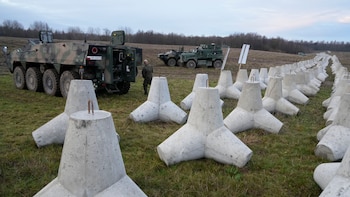
In 2001, the Nicaraguan government, led at that time by Arnoldo Alemán, filed a lawsuit with the International Court of Justice, ICJ. The court based in The Hague, Netherlands, is the principal judicial organ of the United Nations Organization, UN, which is responsible for deciding legal disputes between nations.
The ICJ is composed of 15 judges, who are elected by the UN General Assembly and the Security Council, for a term of 9 years. It is precisely in Article 33 of the Charter of the United Nations that it explains the methods it can use to solve problems between countries. There are 7 mechanisms that it can develop: negotiation, investigation, mediation, conciliation, arbitration, judicial settlement and recourse to regional bodies or agreements.
Understanding the powers of this body, Infobae will then present a chronology of events that complete 20 years, in a dispute that seeks to determine which country has sovereignty over some territories. But, 'the fight' comes from a long time ago.
1928
The President of Nicaragua, at that time, José Bárcenas Meneses, signed a treaty with the Colombian president, Manuel Esguerra, on March 24, 1928; which sought to clarify which nation had the sovereignty of the Mosquito Coast, the islands of the archipelago of San Andrés, Providencia and Santa Catalina; excluding the keys Quitasueño, Roncador and Serrana. This is how it was established, in Law 93 of 1928, where the Colombian Congress states:
The so-called Esguerra - Barcenas Treaty was ratified by the two countries in 1930. This agreement was agreed because Nicaragua demanded that the San Andrés archipelago is located on its continental shelf, and the sovereign inclusion of these islands was established before the Central American country was politically constituted. On the part of Colombia, he assured that the islanders themselves voluntarily accepted the constitution in 1822, thus declaring themselves to be Colombians.
1982
Following the completion of the United Nations Convention on the Law of the Sea, known as the Montego Bay Convention, the maritime boundaries of nations were determined. In this regard, Colombia delimited its territory, which was endorsed by the Department of Geography and Cartography of the United States Department of State. However, Nicaragua rejected these limits, noting that at the time of signing the Esguerra - Barcenas Treaty, the country was invaded by the United States. This was indicated in decree number 334 with the National Reconstruction Board, where it also stated that the island of San Andrés, Providencia and surrounding territories were from the sovereignty of the Central American country. Therefore, the 1928 agreement was null and void.
2001
On December 6 of that year, Nicaragua formally filed a lawsuit with the International Court of Justice against Colombia, claiming a maritime area of more than 50,000 square kilometers, which included the San Andrés archipelago, the keys and all the maritime territory that contains them.
This demand is supported by a memorial that contemplates a legal argument on the sovereignty of the Mosquito Coast and its islands, where they claim that, since 1803, they have been the “owners” of these territories.
They also emphasize that the Esguerra - Bárcenas Treaty was rejected in the 1980s and contained in the White Paper, where they say that the agreement went against the Nicaraguan Constitution. Finally, he assured that what Colombia did with the Montego Bay Convention, does not include the borders declared by the Central American nation.
At this point, they pointed out that they had justified claims under the general principles of maritime delimitation, but these were not taken into account during the delimitation of the Convention outlined.
2003
Following the complaint submitted by Nicaragua, Colombia submitted its preliminary objections to The Hague, first pointing out the validity of the Esguerra - Bárcenas Treaty, signed by mutual agreement of both nations; second, ensuring that the International Court of Justice is not a competent body to deal with issues of Colombian sovereignty, less so far as the rule of San Andrés and Providencia is concerned.
He concluded that Nicaragua's request rejected all international treaties and agreements signed by both nations, so his claims were for a discussion that they should deal with bilaterally, without international intervention.
2007
Although the International Court of Justice began with the investigation and assessment of the two countries' points since 2004, in 2007 The Hague declared itself competent to mediate the case; therefore, in addition to receiving it, it would issue a judgment on the dispute, which would determine the sovereignty of the disputed territories.
That year the ICJ ruled in favor of Colombia, recognizing its sovereignty over the islands of San Andrés, Providencia and Santa Catalina; but, the maritime boundary between the two nations was not defined.
2010
On February 25, the governments of Costa Rica and Honduras requested to intervene in the process, claiming to have interests over the borders that are being disputed.
2012
On 19 November, the International Court of Justice ruled that the ruling it would issue would be unfavorable to both nations. It reaffirmed Colombian sovereignty over the islands of Albuquerque, Bajo Nuevo, Quitasueño, Roncador, Serrana, Serranilla and the San Andrés, Providencia and Santa Catalina archipelago.
But, he declared that the maritime border would be “divided equally”, leaving Nicaragua some 70,000 square kilometers of maritime territory. There he delimited exclusive economic zones and parts that within what is considered Nicaraguan, would be sovereign of Colombia, said waters surround the islands and keys that were indicated in the ruling.
The president at the time, Juan Manuel Santos, rejected the Court's ruling, stating:
2015
After celebrating and feeling “satisfied” by the Hague ruling, Nicaragua decided to review the exceptions and indicated its “willingness to negotiate”, to determine the economic activities that the inhabitants of the islands could carry out in the waters considered Nicaraguan, since such work is done on these borders.
On the part of Colombia, it again declares that the ICJ is not competent to mediate the case or issue the judgments.
2017
Colombia appeals the judgment to the court, alleging judicial instances and dismissals previously legitimized; these arguments are accepted by the Court and replied by Nicaragua a year later.
2022
Today, the International Court of Justice, again, issues a ruling, following the allegations made by Nicaragua about violations of rights by Colombia, made by the ruling of this court in 2012. The Hague acknowledges that Colombia did violate these rights, interfering with fishing and scientific research activities, as well as impeding control of the area by the government of the other nation.
Although the rulings on the sovereignty of San Andrés and Providencia were not changed, neither were many of the violations that Nicaragua was accusing, in addition, they pointed out that they cannot touch the Raizal community, which claims ancestral rights, an issue that must be dealt with bilaterally.
He also assured that Nicaragua issued a decree that goes against international law, regarding the way in which maritime borders are delimited, since this regulation is awarded areas that are Colombian.
What follows are oral hearings that may be convened by The Hague, with a view to issuing another judgment next year.
KEEP READING:
Últimas Noticias
Debanhi Escobar: they secured the motel where she was found lifeless in a cistern
Members of the Specialized Prosecutor's Office in Nuevo León secured the Nueva Castilla Motel as part of the investigations into the case

The oldest person in the world died at the age of 119
Kane Tanaka lived in Japan. She was born six months earlier than George Orwell, the same year that the Wright brothers first flew, and Marie Curie became the first woman to win a Nobel Prize

Macabre find in CDMX: they left a body bagged and tied in a taxi
The body was left in the back seats of the car. It was covered with black bags and tied with industrial tape
The eagles of America will face Manchester City in a duel of legends. Here are the details
The top Mexican football champion will play a match with Pep Guardiola's squad in the Lone Star Cup

Why is it good to bring dogs out to know the world when they are puppies
A so-called protection against the spread of diseases threatens the integral development of dogs




